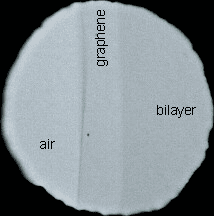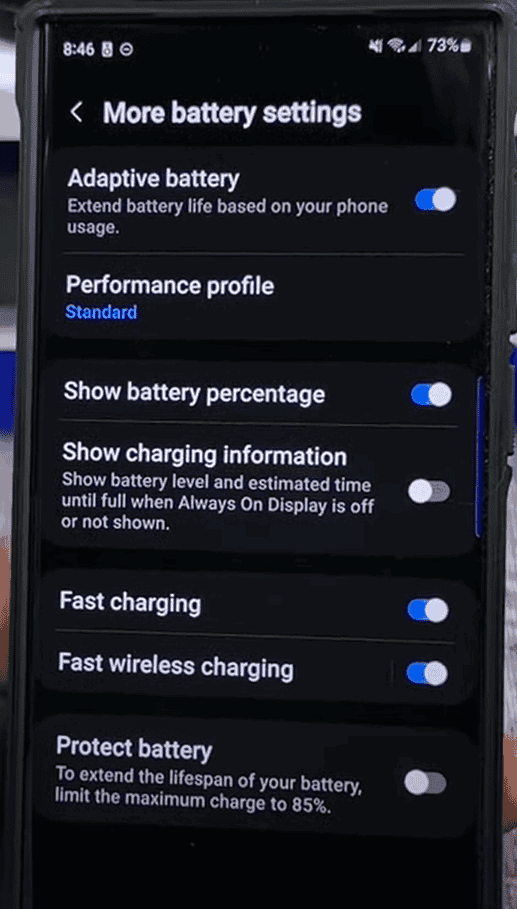Graphene is a special material made of a single layer of carbon atoms arranged in a hexagonal pattern. It is becoming increasingly important for improving smartphone batteries due to its excellent electrical conductivity and strength. Adding graphene to battery design is being investigated for potential improvements in charging times and energy capacity. This could lead to longer-lasting and quicker recharging smartphone batteries.
As smartphone technology evolves, there is a growing demand for more powerful and longer-lasting batteries. Adaptive batteries, also known as smart batteries, are emerging as a game-changer, utilizing artificial intelligence and machine learning to improve power management. This article explores the features and benefits of adaptive batteries and examines the potential of graphene batteries to improve smartphone battery performance. The use of graphene in battery technology promises to offer more hours of usage on a single charge and quick recharging abilities. Graphene batteries have the potential to extend phone battery life significantly and improve overall device longevity.
Graphene: The Future of Smartphone Batteries
What is Graphene?
Graphene is a single layer of carbon atoms arranged in a hexagonal lattice. It’s the thinnest material known to man, yet incredibly strong and flexible. Graphene is also an excellent conductor of heat and electricity. These properties make it a promising material for various applications, including smartphone batteries.

Image Credit: w:User:Carbophiliac / Rahul Nair, Public domain, via Wikimedia Commons
Graphene Batteries: Advantages and Disadvantages
| Advantages | Disadvantages |
|---|---|
| Faster charging times | Higher production costs |
| Higher energy density | Challenges in scaling up production |
| Increased battery lifespan | Potential safety concerns |
| Improved safety compared to lithium-ion batteries | |
| Lighter and thinner batteries |
How Graphene Batteries Work
Graphene batteries work by using graphene as an electrode material. Graphene’s large surface area and high conductivity allow for faster charging and discharging. It also enables the battery to store more energy in a smaller space.
Potential Applications of Graphene Batteries in Smartphones
Graphene batteries could significantly improve the performance of smartphones. They could enable:
- Faster charging: Graphene batteries could charge up to five times faster than traditional lithium-ion batteries.
- Longer battery life: Graphene batteries could store more energy, leading to longer battery life between charges.
- Thinner and lighter phones: Graphene batteries are thinner and lighter than lithium-ion batteries, allowing for slimmer and lighter smartphone designs.
- Improved safety: Graphene batteries are less prone to overheating and fire compared to lithium-ion batteries.
Challenges and Future Development
The main challenge for graphene batteries is the high production cost. However, as research progresses and production techniques improve, the cost is expected to decrease. Researchers are also working on addressing potential safety concerns and scaling up production for commercial use.
Key Takeaways
- Graphene is enhancing lithium-ion battery technology, promising improved smartphone energy storage.
- The integration of graphene could lead to faster charging times and longer battery life for phones.
- Enhanced battery performance from graphene integration will significantly impact future smartphone design and usage.
Graphene’s Impact on Smartphone Battery Technology
Graphene is poised to revolutionize smartphone batteries with improvements in conductivity and energy density, enhanced stability and lifespan, and its integration into multifunctional energy systems. Its commercial prospects suggest a transformative future for mobile power storage.
Advancements in Electrical Conductivity and Energy Density
Graphene, a two-dimensional material made of carbon atoms arranged in a hexagonal lattice, exhibits exceptional electrical conductivity due to its intrinsic electron mobility. This property allows for efficient energy transfer within a battery’s anode and electrolyte. In smartphone batteries, this translates to high energy density—the ability to store more power without increasing the battery size.
Moreover, graphene’s vast surface area contributes to a higher quantum capacitance. Therefore, incorporating graphene-based materials into smartphone batteries can significantly enhance their efficiency.
Enhancing Battery Stability and Lifespan
Graphene’s remarkable chemical stability and mechanical strength, characterized by a high Young’s modulus, play a crucial role in prolonging the lifespan of smartphone batteries. They enable the production of batteries that resist physical degradation over time.
Additionally, graphene oxide coatings on current collectors prevent corrosion and degradation of the battery components, enhancing both the stability and lifespan of the battery. This results in smartphones that maintain their charge capacity longer over their use.
Graphene’s Role in Multifunctional Energy Systems
Beyond its use in lithium-ion batteries, graphene finds application in graphene quantum dots and carbon nanotubes within hybrid systems like supercapacitors and lithium-oxygen batteries. These multifunctional energy systems are ideal for smartphones due to their capacitive energy storage abilities, supporting fast-charging and increased power storage.
Moreover, graphene’s versatility as a nanomaterial allows for integration into various components, potentially leading to the development of thinner, lighter devices without compromising battery capacity.
Future Prospects and Commercial Viability
With ongoing advancements in synthesis methods, such as chemical vapor deposition, and exfoliation techniques for producing reduced graphene oxide, the commercial viability of graphene in smartphone batteries is rapidly increasing. Furthermore, the potential for mass production opens doors to cost-effective incorporation into consumer electronics.
Graphene-enhanced batteries support fast-charging capabilities and are essential for power-demanding applications like electric vehicles and renewable energy systems, indicating a strong future for graphene in energy storage solutions. As companies continue to refine graphene battery technology, its commercialization in the smartphone industry could see significant developments in the coming years.
Smart Batteries: Adaptive Charging and Beyond
The Rise of Adaptive Batteries
Adaptive batteries, also known as smart batteries, are an innovative technology revolutionizing how devices manage power consumption. They utilize artificial intelligence and machine learning algorithms to understand user habits, optimize charging patterns, and extend battery lifespan. These batteries go beyond simply storing energy; they adapt to individual usage patterns, promoting efficiency and longevity.
Key Features and Benefits
- Personalized Charging: Adaptive batteries learn your charging routines and adjust the charging speed accordingly. This prevents overcharging, which can degrade the battery over time.
- Optimized Power Usage: By analyzing app usage and system behavior, adaptive batteries allocate power intelligently, prioritizing essential functions and limiting background activities for maximum efficiency.
- Extended Battery Lifespan: By minimizing stress on the battery through optimized charging and power management, adaptive batteries can significantly increase the overall lifespan of your device.
Current Implementations
| Device Category | Examples of Adaptive Battery Implementation |
|---|---|
| Smartphones | Many modern smartphones, particularly flagship models, incorporate adaptive charging and battery optimization features. |
| Laptops | Several laptop manufacturers have integrated adaptive battery technologies to enhance battery life and performance. |
| Wearables | Smartwatches and fitness trackers often utilize adaptive power management to extend battery life between charges. |
| Electric Vehicles | Advanced battery management systems in electric vehicles employ adaptive algorithms to optimize charging and maximize range. |
The Future of Adaptive Batteries

As technology advances, adaptive batteries are poised to become even more sophisticated and widespread. Future implementations may include:
- Predictive Charging: Anticipating user needs and charging patterns to further optimize charging schedules.
- Enhanced Energy Efficiency: Integrating with smart home systems to adjust charging based on energy availability and cost.
- Longer Lifespans: Breakthroughs in battery chemistry and AI algorithms could lead to batteries that last significantly longer, reducing the need for frequent replacements.
FAQs
Why are graphene batteries not used? How soon will graphene batteries be available?
Graphene batteries are not widely used yet because they are still in the research and development phase. While they show immense potential in terms of faster charging, higher capacity, and longer lifespan, the manufacturing process is currently expensive and complex. Mass production and commercial viability are still a few years away, with estimates ranging from 2025 to 2030.
Is a graphene battery better than lithium?
Yes, graphene batteries have the potential to outperform lithium-ion batteries in several key areas. They can charge significantly faster, store more energy, have a longer lifespan, and offer improved safety due to their lower risk of overheating and fire. However, it’s important to note that this comparison is based on theoretical potential and lab tests. Real-world performance and cost-effectiveness remain to be proven once they are commercially available.
Is Tesla going to use graphene batteries? Does Apple use graphene batteries?
There are no official announcements from Tesla or Apple regarding the use of graphene batteries in their products. Both companies are known for their innovation and investment in battery technology, so it’s possible they are exploring graphene batteries, but no concrete plans have been confirmed publicly.
Do graphene batteries degrade over time?
All batteries degrade over time, and graphene batteries are no exception. However, due to their unique properties, graphene batteries are expected to have a much longer lifespan than traditional lithium-ion batteries. Some estimates suggest they could last up to three times longer before needing replacement.
Why graphene failed and Isn’t Used?
Graphene hasn’t “failed” but rather faces challenges in large-scale production and commercialization. These challenges include:
- High production costs: Current methods for producing high-quality graphene are expensive, hindering widespread adoption.
- Technical difficulties: Integrating graphene into existing battery technologies poses technical hurdles that researchers are still working to overcome.
- Environmental concerns: The production of graphene can involve the use of hazardous chemicals, raising concerns about its environmental impact.
These challenges, along with the need for further research and development, are the primary reasons why graphene batteries are not yet widely used.
In addition to these challenges, graphene also has some inherent disadvantages:
- Zero bandgap: Graphene is a zero-bandgap material, meaning it conducts electricity even when it’s supposed to be “off”. This can lead to power leakage and reduced efficiency in electronic devices.
- Susceptibility to oxidation: Graphene can be easily oxidized in the presence of oxygen, affecting its stability and performance.
Despite these disadvantages, researchers are actively working to overcome these challenges and unlock the full potential of graphene in various applications, including batteries.







